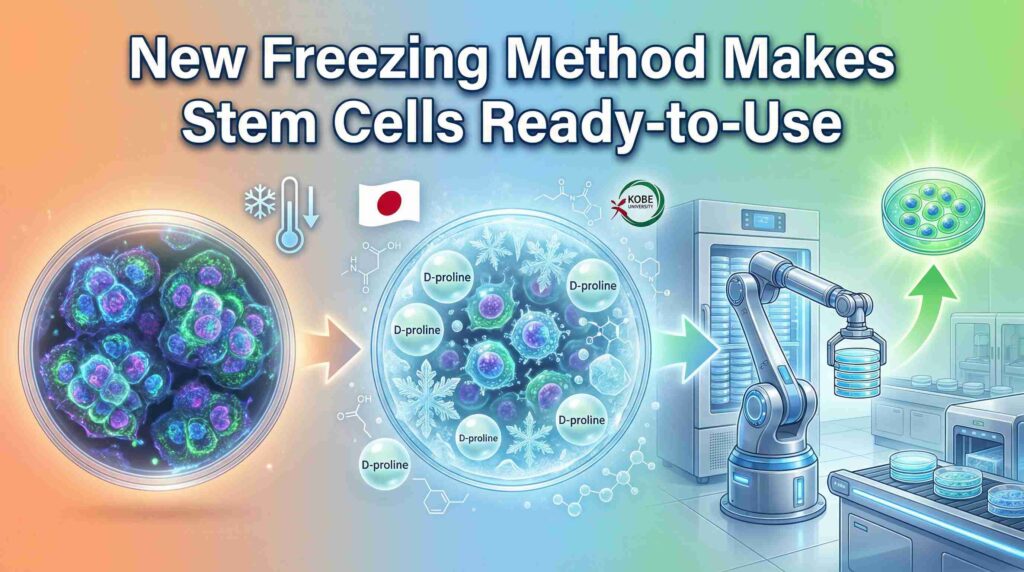Stem cells are fascinating cells that have the ability to self-renew and give rise to differentiated cell types. Adult stem cells reside in specialized microenvironments, or niches, that support stem cell function and regulate their behavior. Stem cell niches provide important signals that keep stem cells quiescent and undifferentiated, and mediate appropriate stem cell activation and differentiation when needed. These niches are comprised of surrounding support cells, extracellular matrix, and signaling molecules that work together to nurture stem cells. Proper stem cell niche function is critical for maintaining tissue homeostasis and enabling regeneration after injury.
However, there is accumulating evidence that stem cell niche function deteriorates with age. Age-related changes to niche components are thought to contribute to declining stem cell function across diverse tissues. For example, aged muscle stem cell niches exhibit increased fibrosis and inflammatory signals that negatively impact muscle stem cell function. Similar niche defects have been described in the aged brain, blood, intestine, and other tissues. These niche changes are believed to underlie declining tissue maintenance and impaired injury responses in the elderly.
In this article, we will explore how age-related dysfunction of stem cell niches is tied to reduced stem cell function and impaired tissue homeostasis. We will discuss strategies to enhance or rejuvenate aged niches to boost stem cell function and longevity. Proper niche support is key for maintaining youthful stem cell activity and combating age-related functional decline. Understanding niche biology holds great promise for developing therapies to promote healthy aging.
The Stem Cell Niche
Stem cell niches are specialized and highly dynamic microenvironments that regulate stem cell behavior. They are composed of a variety of cell types, signaling molecules, and extracellular matrix that work together to control properties of local stem cells. Stem cell niches provide anchorage for stem cells and secrete factors that mediate quiescence, self-renewal, and cell fate decisions. Understanding what comprises a functional niche is key for appreciating how niches change in aging.
Adult stem cells such as hematopoietic stem cells, neural stem cells, satellite cells, and intestinal stem cells each occupy unique niches tailored to their tissue of residence. However, common niche components serve to regulate stem cells across tissues.
Key features include:
- Support cells such as fibroblasts, macrophages, endothelial cells that interact closely with stem cells
- Extracellular matrix proteins like laminin and fibronectin that anchor stem cells
- Signaling molecules like Wnt, TGFbeta, and cytokines that mediate quiescence and activation
- Low oxygen tension and metabolic gradients that influence stem cell state
- Cell-cell adhesion molecules that connect stem cells to the niche
Together these niche components integrate local signals from the tissue microenvironment and systemic signals to appropriately tune stem cell behavior.
In the next section we will discuss how aging impacts these critical niche constituents, and the effects this has on resident stem cells.
Stem Cell Niche Dysfunction with Age
Aging has widespread detrimental effects on stem cell niches across tissues. Multiple niche components including support cells, extracellular matrix, and signaling molecules exhibit dysfunction with advanced age. These age-related niche changes are thought to be major contributors to the decline in stem cell function seen during aging.
Some examples of niche defects observed in aged tissues:
- Impaired interactions between niche cells and stem cells. For instance, aged muscle stem cells show reduced adhesion to fibroblast niche cells.
- Accumulation of extracellular matrix components leading to fibrosis/scarring of the niche. This is seen in satellite cell and hematopoietic stem cell niches.
- Depletion of collagen IV and laminin that normally provide scaffolding for stem cells. This disrupts stem cell anchorage in the niche.
- Increased inflammatory signals from niche immune cells that drive aberrant stem cell activation. Chronic inflammation is a hallmark of the aging niche.
- Reduced growth factors like IGF-1 that support stem cell function. This impairs muscle regeneration in aged mice.
- Stiffening of the niche from increased crosslinking of ECM proteins. This can disrupt mechanosignaling to stem cells.
- Impaired angiogenesis and reduced blood flow to the niche that normally supplies nutrients to stem cells.
This deterioration of the niche microenvironment with age contributes to stem cell aging by disrupting quiescence, self-renewal, and lineage biases. However, in many cases it remains unclear whether niche dysfunction drives stem cell defects during aging or vice versa. Unraveling the precise mechanisms linking niche aging to stem cell decline remains an area of active research.
Stem Cell Niche Rejuvenation for Longevity
The age-related dysfunction of stem cell niches presents a promising target for interventions aimed at rejuvenating stem cell function and tissue repair capacity. Strategies to enhance or re-engineer aged niches could provide an approach to boost tissue maintenance and extend healthy lifespan.
Some promising approaches under investigation include:
- Removal of senescent niche cells that accumulate with age and secrete inflammatory and matrix-degrading factors. Selective elimination of these cells may “clean up” aged niches.
- Targeting niche extracellular matrix components to reduce fibrosis and stiffening. This could involve breaking down scarring proteins or enhancing matrix crosslinking enzymes.
- Delivering youthful niche cells derived from induced pluripotent stem cells to replenish aged, dysfunctional niche cell populations.
- Modulating niche signaling environments with recombinant proteins or small molecules to promote more youthful stem cell activity.
- Transplanting stem cells into young niche environments to rejuvenate their function via exposure to pro-youthful niche signals.
- Exercise and calorie restriction regimens that enhance systemic cues to remodel aged niches and improve stem cell function.
While promising, niche rejuvenation strategies must be pursued cautiously given the intricacy of niche biology. Further research into niche aging mechanisms is needed to identify key molecular targets and assess potential risks. Nevertheless, repairing damaged niches represents an exciting prospect for revitalizing stem cell function, tissue repair, and extending healthy lifespan.
FAQ
Q: What are stem cell niches and their significance in aging and longevity?
A: Stem cell niches are dynamic microenvironments that regulate the behavior of stem cells within tissues. They provide the necessary signals for stem cell maintenance, self-renewal, proliferation, and differentiation. The study of stem cell niches and their significance in aging and longevity helps us understand the processes and mechanisms that underlie the aging of stem cells and its impact on overall aging and longevity.
Q: How does stem cell aging affect their function?
A: Stem cell aging is associated with a decline in stem cell function. As stem cells age, they exhibit a decrease in their ability to self-renew and differentiate into specialized cell types. This decrease in stem cell function can lead to a reduced regenerative capacity and impaired tissue homeostasis, which are hallmarks of aging.
Q: What is the role of mesenchymal stem cells in aging?
A: Mesenchymal stem cells (MSCs) are a type of adult stem cell that have the ability to differentiate into various cell types, such as bone, fat, and cartilage cells. During aging, the number and function of MSCs decline, which can impair tissue repair and regeneration processes. MSCs also play a role in the immune system and inflammation control, and their aging can contribute to age-related diseases and conditions.
Q: What are germline stem cells and how do they age?
A: Germline stem cells are a type of stem cell that gives rise to the gametes (sperm and eggs) in multicellular organisms. Germline stem cells have a unique mechanism of aging known as the “immortal strand hypothesis.” According to this hypothesis, during DNA replication, the older DNA strand is retained by the mother stem cell, while the newly synthesized DNA strand is passed on to the daughter cell. This mechanism aims to preserve the integrity of the genome, reducing DNA mutations and cellular aging.
Q: How does aging affect stem cells during the cell cycle?
A: Aging can have various effects on stem cells during the cell cycle. It can lead to cell cycle arrest, where the stem cells remain in a dormant state and do not progress through the cell cycle. Aging can also affect the timing and duration of different phases of the cell cycle, such as the G1, S, G2, and M phases. These alterations in the cell cycle dynamics of stem cells can contribute to the overall aging process.
Q: What is stem cell self-renewal and how is it affected by aging?
A: Stem cell self-renewal is the ability of stem cells to divide and generate daughter cells that have the same characteristics as the parent cell. Aging can lead to a decline in stem cell self-renewal, resulting in a reduced number of functional stem cells over time. This loss of stem cell self-renewal contributes to the decreased regenerative capacity and aging phenotype observed in aged individuals.
Q: What are the mechanisms of stem cell aging?
A: The mechanisms of stem cell aging are multifaceted and involve various cellular and molecular processes. These mechanisms include telomere shortening, oxidative stress, DNA damage, epigenetic changes, altered signaling pathways, and cellular senescence. These processes contribute to the functional decline and altered behavior of stem cells during aging.
Q: How do hair follicle stem cells age and what is their significance in aging?
A: Hair follicle stem cells (HFSCs) are a type of stem cell that reside in the hair follicles and contribute to hair growth and regeneration. During aging, HFSCs show a decline in their regenerative capacity and function. This age-related decline in HFSCs is associated with hair thinning, graying, and hair loss. Studying HFSC aging can provide insights into the mechanisms of stem cell aging and its impact on tissue regeneration and aging phenotypes.
Q: How does aging affect the stem cell population in various tissues?
A: Aging is associated with a decrease in the number of functional stem cells in various tissues. For example, in the bone marrow, the number of hematopoietic stem cells (HSCs) declines with age, leading to impaired immune function and an increased risk of hematologic disorders. Similarly, aging affects the stem cell population in the skin, muscle, brain, and other tissues, contributing to tissue degeneration and functional decline.
Q: What is the role of stem cell function during aging and longevity?
A: Stem cell function plays a critical role in aging and longevity. The decline in stem cell function during aging leads to a reduced regenerative capacity, impaired tissue repair, and increased susceptibility to age-related diseases and conditions. Therefore, understanding the mechanisms and factors that influence stem cell function during aging is essential for developing strategies to promote healthy aging and improve longevity.
Conclusion
In summary, stem cell niches undergo substantial age-related deterioration that contributes significantly to declining stem cell function and tissue maintenance capacity. Defects in niche support cells, extracellular matrix, and signaling underlie impaired quiescence, self-renewal, and activation of stem cells in aged tissues. While some niche defects may be driven by intrinsic stem cell aging, evidence suggests niche dysfunction is a major driver of stem cell decline during aging.
Targeting the age-related niche changes represents a promising strategy to rejuvenate stem cell function for tissue homeostasis and longevity. Exciting new approaches are emerging to enhance or re-engineer aged niches to boost endogenous stem cell activity. However, key questions remain regarding niche aging mechanisms and how to safely administer niche rejuvenation therapies.
Niche biology offers tremendous potential for developing interventions that extend healthy lifespan by supporting stem cell function. Realizing this potential will require unraveling the intricacies of how niches change during aging and identifying tractable points for intervention. The coming years promise to yield exciting advances in harnessing the niche for combating tissue aging.


